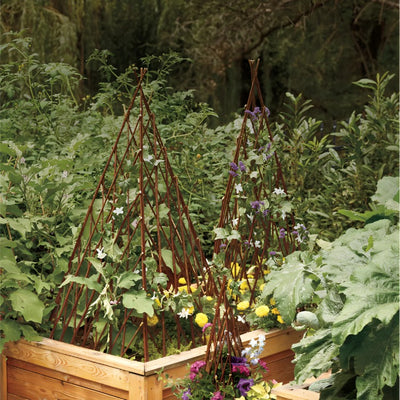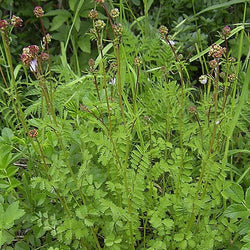Hardy, perennial kitchen garden herb
Description: Dark green, serrated foliage with a fresh cucumber-like flavor; the purplish-red flowers produce seed in late summer
Habit: Mounded habit; grows up to 2 feet tall when in flower, and up to 2 feet wide
Culture: Prefers evenly moist but well-drained soil and full sun to partial shade; rich garden loam; cut back regularly for fresh leaves
Hardiness: Cold hardy to USDA Zone 4
Origin: Europe, Western Asia
Attributes: Edible, Fragrant foliage, Deer resistant
Jefferson Documented
Thomas Jefferson planted Burnet on a number of occasions, beginning in 1778, primarily as a field crop on his farms and orchard. In 1812 he obtained around eight bushels of seed, which was to be "sown half a bushel to the acre". Fearing Burr described Burnet as a salad plant in Field and Garden Vegetables of America, 1863, and added that "the leaves have a warm, piquant taste, and when bruised resemble cucumbers in odor. They are sometimes used as salad, and occasionally form an ingredient in soups". The Virginia House-wife, 1824, by Mary Randolph (an in-law of Jefferson's daughter, Martha) contains a recipe for Burnet sauce, to be used on "fish, poultry, or boiled butchers meat". Deer avoid the fragrant leaves.
Arrives in a 2.5" pot.









